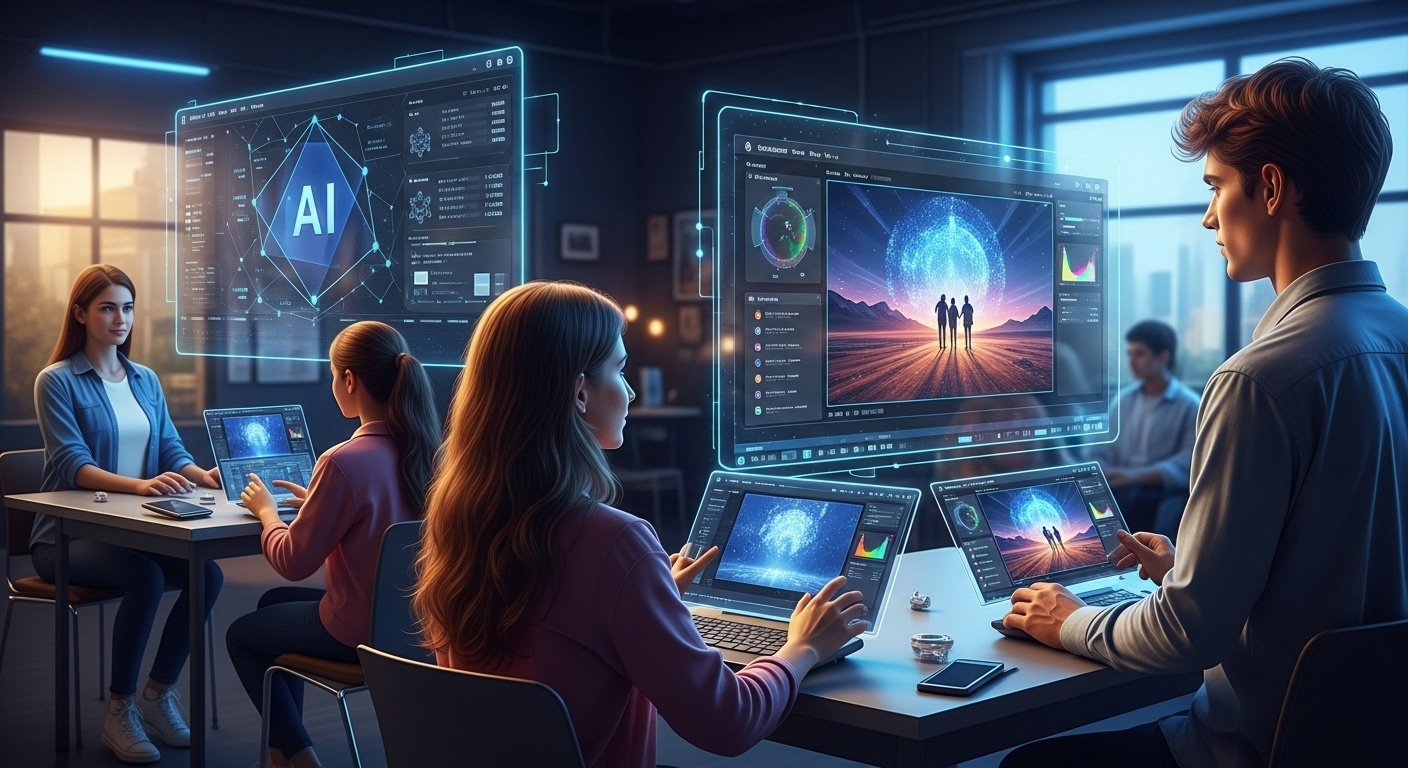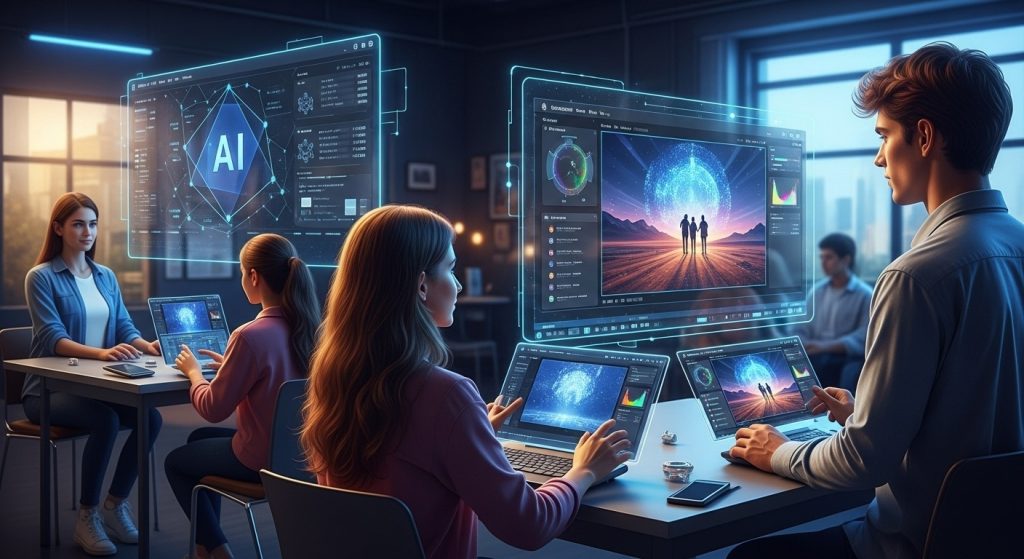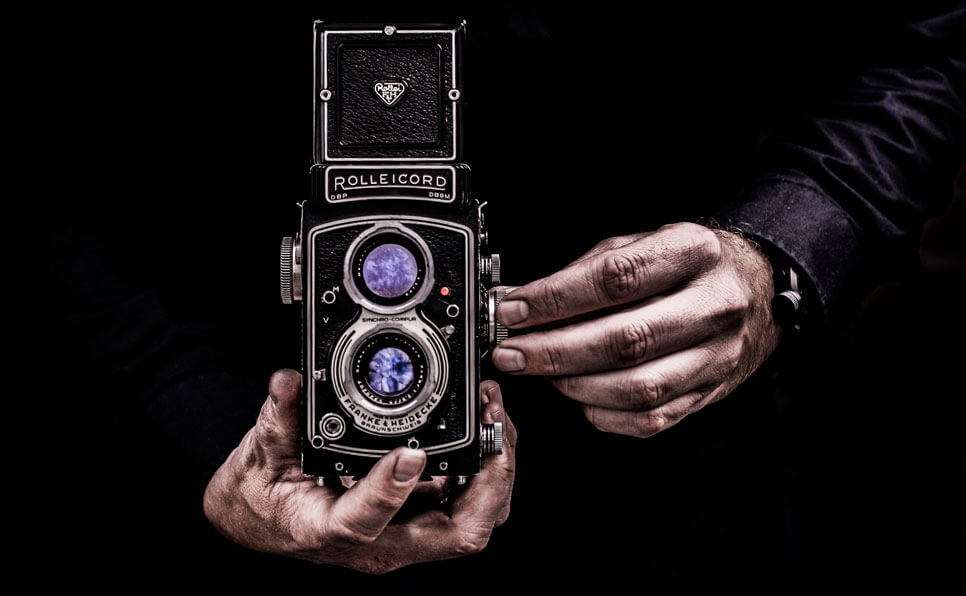Forget darkroom alchemy; today’s photography students face a different kind of magic: algorithms. AI’s fingerprints are now all over image creation, from Adobe’s Sensei-powered content-aware fill, which allows for previously unimaginable levels of manipulation, to AI-driven style transfer mimicking masters like Ansel Adams. Generative AI tools like DALL-E 2 and Midjourney are blurring the lines between photography and digital art, demanding a curriculum shift. Expect a deeper dive into prompt engineering, ethical considerations surrounding AI-generated imagery. The critical evaluation of authenticity in a world where seeing is no longer believing. This transformation necessitates a re-evaluation of traditional photographic skills, demanding future graduates navigate a landscape where human creativity and artificial intelligence converge.

The Rise of AI in Visual Arts: A New Lens for Photography Education
Artificial intelligence (AI) is no longer a futuristic concept; it’s rapidly transforming various sectors. Photography is no exception. Within university photography programs, AI is poised to revolutionize teaching methodologies, creative processes. The very definition of what it means to be a photographer. Understanding these changes is crucial for both educators and aspiring photography professionals.
At its core, AI refers to the ability of machines to perform tasks that typically require human intelligence. In photography, this manifests in several ways, from automated image editing to AI-powered camera systems that can recognize scenes and adjust settings accordingly.
AI-Powered Tools: Expanding the Photographer’s Toolkit
One of the most immediate impacts of AI is the introduction of new tools that augment the photographer’s capabilities. These tools streamline workflows, enhance image quality. Even open up entirely new creative avenues.
- AI-Driven Image Editing: Software like Adobe Photoshop and Luminar AI now incorporate AI features for tasks such as object removal, sky replacement. Automated color correction. This allows photographers to focus on the artistic aspects of their work rather than spending hours on tedious manual adjustments.
- AI-Assisted Camera Systems: Modern cameras are equipped with AI algorithms that can recognize faces, track moving subjects. Optimize settings for different shooting conditions. This enables photographers to capture sharper, more well-exposed images with greater ease.
- AI-Generated Content: While still in its early stages, AI is also being used to generate entirely new images from text prompts or sketches. This technology can be used for creating concept art, visualizing ideas. Exploring unconventional visual styles.
Curriculum Evolution: Integrating AI into Photography Studies
As AI becomes increasingly prevalent in the field, university photography programs must adapt their curricula to equip students with the knowledge and skills necessary to thrive in an AI-driven world. This involves incorporating AI-related topics into existing courses and developing new courses that focus specifically on AI and photography.
- Understanding AI Algorithms: Students need to grasp the underlying principles of AI algorithms, such as machine learning and neural networks, to effectively use AI tools and critically evaluate their outputs.
- Ethical Considerations: The use of AI in photography raises crucial ethical questions about authorship, authenticity. The potential for bias. Photography programs must address these issues and encourage students to develop a strong ethical framework for their work.
- Developing New Creative Approaches: AI can be a powerful tool for experimentation and innovation. Photography programs should encourage students to explore new creative approaches that leverage AI to push the boundaries of the medium.
Rethinking the Role of the Photographer: From Technician to Creative Director
The rise of AI challenges the traditional role of the photographer as a technician who primarily focuses on capturing and manipulating images. As AI automates many of these tasks, the photographer’s role is evolving towards that of a creative director who oversees the entire visual process, from concept development to final execution.
This shift requires photographers to develop a broader range of skills, including:
- Conceptual Thinking: Photographers need to be able to develop strong visual concepts and effectively communicate their ideas to clients and collaborators.
- Project Management: Managing complex projects that involve AI tools and other technologies requires strong project management skills.
- Collaboration: Photographers increasingly need to collaborate with AI developers, data scientists. Other specialists to bring their creative visions to life.
A Comparison: Traditional vs. AI-Enhanced Photography Education
To illustrate the transformative impact of AI on photography education, let’s compare traditional and AI-enhanced approaches:
| Aspect | Traditional Photography Education | AI-Enhanced Photography Education |
|---|---|---|
| Focus | Technical skills, manual techniques | Technical skills, AI tools, creative direction |
| Curriculum | Darkroom techniques, film processing, traditional editing | Digital editing, AI-powered tools, ethical considerations |
| Role of the Photographer | Technician, image manipulator | Creative director, visual strategist |
| Learning Methods | Lectures, demonstrations, hands-on practice | Workshops, AI tool tutorials, collaborative projects |
Real-World Applications: AI in Professional Photography
The impact of AI is already being felt in various areas of professional photography:
- Commercial Photography: AI is used to automate image selection, retouching. Other post-production tasks, allowing commercial photographers to deliver high-quality images more quickly and efficiently.
- Photojournalism: AI is being used to examine images and identify potential news events, helping photojournalists to capture crucial moments in real-time. But, ethical considerations regarding manipulation and bias are critical.
- Artistic Photography: AI is being used as a creative tool to generate new and unexpected visual effects, pushing the boundaries of artistic expression in photography.
The Future of Photography Education: Embracing AI’s Potential
The future of photography education lies in embracing the potential of AI while maintaining a strong emphasis on creativity, critical thinking. Ethical considerations. By integrating AI into the curriculum and encouraging students to explore new creative approaches, university photography programs can prepare the next generation of photographers to thrive in an increasingly AI-driven world. This includes fostering a deep understanding of the technology’s capabilities and limitations, as well as its ethical implications. For example, encouraging students to experiment with AI-powered style transfer to mimic the techniques of master painters can be a powerful learning tool, provided they are also taught the importance of originality and avoiding plagiarism.
Conclusion
The integration of AI into photography education is not a looming threat. A current reality offering unparalleled opportunities. Instead of fearing replacement, embrace AI tools like generative fill in Photoshop or AI-powered image enhancement software as creative assistants. Experiment with AI-driven style transfer to reimagine classic photographic techniques. My advice? Start small. Dedicate even just one hour a week to exploring a new AI photography app or technique. The future photographer won’t just comprehend aperture and shutter speed; they’ll also grasp algorithms and neural networks. This means actively seeking out workshops or online courses focusing on AI in visual arts. Don’t just passively learn – build a portfolio showcasing your AI-enhanced photography projects. This demonstrates to future employers that you’re not just keeping up. Leading the charge. The key is to see AI not as a replacement for artistic vision. As a powerful extension of it, enabling you to create images previously unimaginable. Stay curious, stay creative. Let AI amplify your photographic voice.
More Articles
How AI Is Transforming Engineering Education at Top Universities Now
Crafting Compelling Statements: How to Make Your Application Truly Stand Out
Ace Your Entrance Exam: Proven Study Habits and Time Management Tips
Online Vs. In-Person Engineering Degrees: Which Path Is Right for You?
FAQs
So, AI’s changing photography education? How big of a deal is this, really?
Honestly, it’s huge! Think of it like the shift from film to digital. Even faster. AI is impacting everything from how images are captured and edited to how students learn and even what kinds of photographic jobs will be around in the future. Universities need to adapt to stay relevant.
What specific skills are becoming more vital in photography programs because of AI?
Great question! Beyond the traditional skills, things like prompt engineering (effectively telling AI what you want), understanding the ethical implications of AI-generated imagery. Developing a strong personal artistic vision that AI can’t easily replicate are becoming vital. , knowing how to guide AI and having a unique creative voice.
Are universities actually teaching students about AI’s role in photography yet?
Some are definitely ahead of the curve! You’ll find universities incorporating AI tools into their editing courses, exploring AI’s impact on visual storytelling. Even offering dedicated courses on AI and photography. But it’s not universal yet; some are still catching up.
Will AI eventually replace photography teachers?
That’s a common concern. Probably not entirely. AI can be a powerful tool for instruction, providing personalized feedback and assistance. But, the mentorship, artistic guidance. Real-world experience that human instructors provide are irreplaceable. Think of AI as an assistant, not a replacement.
I’m worried AI will make my photography skills less valuable. Is that a valid concern?
It’s understandable to feel that way! But look at it this way: AI can automate some of the more tedious tasks, freeing you up to focus on the creative and conceptual aspects of your work. It’s about learning to work with AI, not competing against it. Your unique vision and ability to connect with subjects will always be valuable.
What kind of AI tools should I expect to see in a modern photography program?
You’ll probably encounter AI-powered editing software with features like automatic noise reduction and object removal. Some programs might explore AI for generating variations of images, creating style transfers, or even designing entire photographic compositions. It really depends on the program’s focus.
If I’m looking at photography programs, what are some red flags that a program isn’t keeping up with AI?
Good thinking! Watch out for programs that completely ignore AI, focus solely on traditional techniques without acknowledging the changing landscape, or lack any discussion of the ethical considerations surrounding AI in photography. A forward-thinking program should embrace AI as a tool and address its implications.


